4-Acryloylmorpholine
Synonym(s):1-(Morpholin-4-yl)propenone;1-Morpholinoprop-2-en-1-one;4-(1-Oxo-2-propenyl)morpholine;4-Acryloylmorpholine;Acryloylmorpholine
- CAS NO.:5117-12-4
- Empirical Formula: C7H11NO2
- Molecular Weight: 141.17
- MDL number: MFCD00047413
- EINECS: 418-140-1
- SAFETY DATA SHEET (SDS)
- Update Date: 2025-01-27 09:38:02
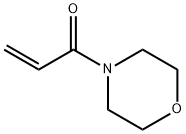
What is 4-Acryloylmorpholine?
Chemical properties
4-Acryloylmorpholine has a melting point of ?35 °C and is clear liquid at room temperature. At 25 °C, it has a density of 1.122 g/mL. It needs to be stored at 2-8°C.
The Uses of 4-Acryloylmorpholine
4-Acryloylmorpholine is used in adhesives, UV curable resins, industrial coatings, UV printing ink, oil recovery polymer, medicinal and commodity chemicals.
Reactions
Using cobalt catalysis, diethylzinc promotes the conjugate reduction of 4-acryloylmorpholine to produce the corresponding ethylzinc enolate, which reacts with N-tosyl aldimines to afford β-aminoamides[1].
Flammability and Explosibility
Non flammable
Synthesis
A
solution of 0.04 mol of the corresponding amine in 20 ml of anhydrous
methylene chloride was slowly added at 0-5??C to 0.02 mol of acryloyl
chloride in 20 ml of anhydrous methylene chloride. The mixture was
stirred for 3 h at room temperature in an inert atmosphere, and the
precipitate was filtered off and washed with methylene chloride (2 ?á 10
ml). The organic layer was washed in succession with 5 ml of water and 5
ml of a saturated solution of NaHCO3 and dried over Na2SO4, the solvent
was removed under reduced pressure, and the residue was purified by
column chromatography on silica gel using hexane-ethyl acetate (5 : 1 to
1 : 1) as eluent. 4-Acryloylmorpholine, Yield 1.78 g (63%).
IR spectrum, |í, cm-1: 2857, 1647, 1612, 1439, 1263, 1238, 1115, 1038,
953. 1H NMR spectrum, |?, ppm: 3.51-3.73 m (8H, NCH2CH2O),
5.72 d.d (1H, 3-Hcis, 3J = 10.6, 2J = 1.9 Hz), 6.29 d.d (1H, 3-Htrans,
3J = 16.7, 2J = 1.9 Hz), 6.57 d.d (1H, 2-H, J = 16.7, 10.6 Hz). 13C NMR
spectrum, |?C, ppm: 41.74 and 45.66 (CH2N), 66.22 (CH2O), 126.64 (C2),
127.69 (C3), 164.92 (C1). Mass spectrum, m/z (Irel, %): 141 (36) [M]+,
140 (12), 126 (58), 112 (22), 111 (15), 110 (15), 109 (12), 98 (10), 96
(26), 86 (72), 83 (13), 70 (14), 68 (14), 57 (17), 56 (86), 55 (100),
42 (23). Fig. The synthetic method 2 of 4-Acryloylmorpholine
Fig. The synthetic method 2 of 4-Acryloylmorpholine
References
[1] PRIETO O, LAM H W. Cobalt-catalyzed reductive Mannich reactions of 4-acryloylmorpholine with N-tosyl aldimines??[J]. Organic & Biomolecular Chemistry, 2007. DOI:10.1039/B715839D.
Properties of 4-Acryloylmorpholine
| Melting point: | −35 °C(lit.) |
| Boiling point: | 158°C 50mm |
| Density | 1.122 g/mL at 25 °C(lit.) |
| vapor pressure | 1.03-1.64Pa at 25-29.9℃ |
| refractive index | n |
| Flash point: | >230 °F |
| storage temp. | 2-8°C |
| solubility | Soluble in water |
| form | Liquid |
| pka | -1.08±0.20(Predicted) |
| color | Colorless to yellow |
| Water Solubility | 1000g/L at 20℃ |
| Sensitive | Light Sensitive |
| BRN | 119302 |
| CAS DataBase Reference | 5117-12-4(CAS DataBase Reference) |
| NIST Chemistry Reference | N-acryloylmorpholine(5117-12-4) |
| EPA Substance Registry System | Morpholine, 4-(1-oxo-2-propenyl)- (5117-12-4) |
Safety information for 4-Acryloylmorpholine
| Signal word | Danger |
| Pictogram(s) |
 Corrosion Corrosives GHS05  Exclamation Mark Irritant GHS07  Health Hazard GHS08 |
| GHS Hazard Statements |
H302:Acute toxicity,oral H317:Sensitisation, Skin H318:Serious eye damage/eye irritation H373:Specific target organ toxicity, repeated exposure |
| Precautionary Statement Codes |
P280:Wear protective gloves/protective clothing/eye protection/face protection. P305+P351+P338:IF IN EYES: Rinse cautiously with water for several minutes. Remove contact lenses, if present and easy to do. Continuerinsing. |
Computed Descriptors for 4-Acryloylmorpholine
| InChIKey | XLPJNCYCZORXHG-UHFFFAOYSA-N |
4-Acryloylmorpholine manufacturer
CEFA CILINAS BIOTICS PVT LTD
New Products
3-Iodophenylacetic acid 3-Pyridineacetonitrile, α-hydroxy- 2-Propanamine, 1-chloro-, hydrochloride (9CI) 3-(hexyloxy)-4-(pyridin-3-yl)-1,2,5-thiadiazole 2-Hexyn-1-ol Dibenzo-18-crown-6 Nickel(II) perchlorate hexahydrate, 98% 4-Bromophenylacetonitrile, 95% 3-Bromo-4-fluoroaniline, 97% Sodium tetraborate decahydrate, 98% Palladium(II) acetate, trimer, Pd 99% 4-Bromo-2-chlorotoluene, 97% N N Dimethylformamide Dimethyl Acetal (Dmf Dma) 2,3-Dichloro Benzoyl Cyanide [Side Chain] Bis(2-Chloroethyl) Amine Hydrochloride L-Glutamic Acid Diethyl Ester Hydrochloride 5-(Difluoromethoxy)-2-Mercaptobenzimidazole 1-Ethyl-3-(3-Dimethylaminopropyl)-Carbodiimide Hydrochloride [EDC Hcl] 1,4-Napthoquinone Bromoiodomethane Sodium Bicarbonate Methylene Dichloride (MDC) Ethyl Acetate Indole-3-Carbinol (I3C)Related products of tetrahydrofuran

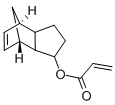

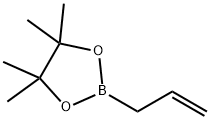
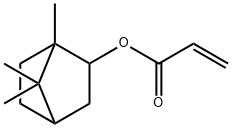

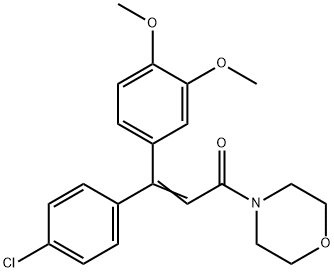

You may like
-
 yyyy-m-d 99.00%View Details
yyyy-m-d 99.00%View Details
yyyy-m-d -
 yyyy-m-d Hydroxylamine Hydrochloride 99.00%View Details
yyyy-m-d Hydroxylamine Hydrochloride 99.00%View Details
yyyy-m-d -
 yyyy-m-d 99.00%View Details
yyyy-m-d 99.00%View Details
yyyy-m-d -
 4-Acryloylmorpholine (stabilized with MEHQ) CAS 5117-12-4View Details
4-Acryloylmorpholine (stabilized with MEHQ) CAS 5117-12-4View Details
5117-12-4 -
 4-Acryloylmorpholine, stabilized with 4-methoxyphenol CAS 5117-12-4View Details
4-Acryloylmorpholine, stabilized with 4-methoxyphenol CAS 5117-12-4View Details
5117-12-4 -
 4-Acryloylmorpholine CAS 5117-12-4View Details
4-Acryloylmorpholine CAS 5117-12-4View Details
5117-12-4 -
 Cyclohexane, (2-propynyloxy)- 67967-07-1 98+View Details
Cyclohexane, (2-propynyloxy)- 67967-07-1 98+View Details
67967-07-1 -
 132945-75-6 (S)-1-Boc-3-methanesulfonyloxy-pyrrolidine 98+View Details
132945-75-6 (S)-1-Boc-3-methanesulfonyloxy-pyrrolidine 98+View Details
132945-75-6
